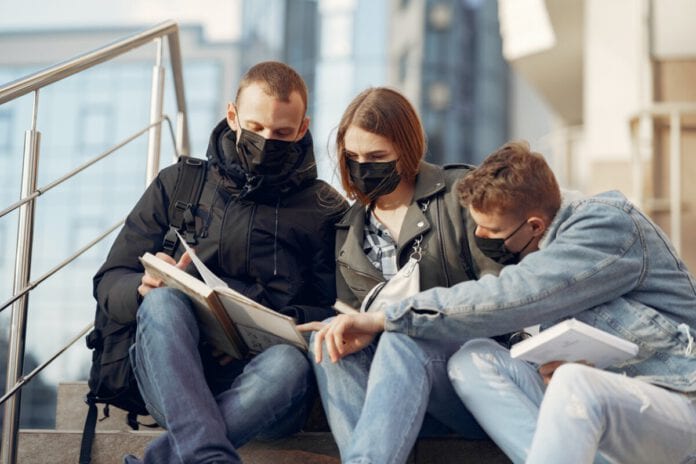While we wait for tomorrow’s press conference for an update on the coronavirus measures in the Netherlands, the Outbreak Management Team (OMT) has advised the cabinet that people wear medical face masks. 😷
This goes, among others, for public outdoor spaces where the 1.5-metre distance rule cannot be kept, including shopping streets, sports venues, and during demonstrations, reports the NOS.
A breath of fresh air?
Well, not really. While a mask mandate isn’t new to the Netherlands, the cabinet has been advised to specifically make medical masks (minimum Type II) mandatory — meaning you wouldn’t be able to use non-medical masks, like ones made from cloth, anymore.
These are the types of masks healthcare professionals wear. We can only guess what that says about the state of coronavirus in the Netherlands. 😕
Indoor measures to change
The OMT has also advised that people wear a medical mask in public indoor spaces, where people from different households may gather regardless of whether social distancing rules can be kept.
Tieners would not be exempt from this rule — anyone over the age of 13 should wear a face mask even when seated unless they are eating or drinking.
This rule would also apply to many institutions, such as colleges and universities, cultural institutions, companies, and offices. The only exception would be when people are exercising.
What counts as medical and non-medical
If you’re unsure what type of mask you’ve been wearing, here’s a quick breakdown of the types of masks and their classification.
| Type of mask | Description |
| Non-medical face masks | These masks are not subject to legal requirements in terms of the quality and protection they offer. They don’t protect the wearer but if worn properly, they can protect others. Cloth masks are part of this category. |
| Surgical/medical face masks (Type I, II, and IIR) | These masks are intended for healthcare professionals. They are less effective in protecting the wearer from outside viruses and bacteria because air-borne particles can enter through the sides. While type Type I provide the lowest degree of protection, Type II medical masks, which the OMT is recommending, have a filter of 98%. |
| FFP mouth-nose masks | These masks are worn completely to the face and are intended to protect the wearer from inhaling harmful substances in the air, including a virus. |
At the moment, all non-essential shops and most public institutions are still closed, so we’re going to have to wait for the cabinet’s final decision until tomorrow’s press conference.
What do you think about the mandatory use of medical masks? Tell us in the comments. 👇
Feature Image: Gustavo Fring/Pexels

Like there’s not enough plastic waste from single-use masks already. Oceans are full of them.
Medical masks are just that for medical professionals. The useage of these masks is only 4 hours. Once saturated they will transmit anything and everything. Not to mention long term use and oxygen decreasage upon inhalation. Also, People will not just throw them away, they will keep them for weeks in their pockets , purses, etc. We should really be focused on early dedection and early treatments as we have seen people with 2 jabs and a booster have contracted the new variants.
The official period for using such masks is 8 hours, not 4, and in practice ordinary people can get much longer use, especially if rotating among a few to let them dry out and contaminate. (covid virus doesn’t last long on soft surfaces). They do not reduce oxygen. Professionals wear them day in and out without harm.
The best treatment is prevention, like wearing an FFP2.